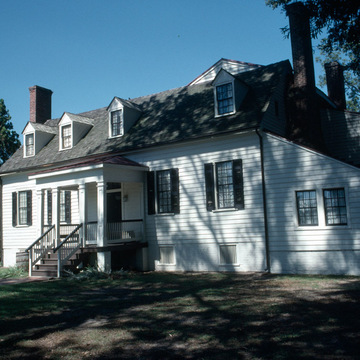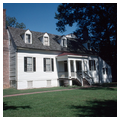You are here
Meadow Farm Museum (at Crump Park)
Here in 1800 two slaves informed Mosby Sheppard that Gabriel Prosser was organizing a slave rebellion. The miscreants were stopped and punished, and the event caused a series of reforms that diminished the rights of enslaved and freed blacks in Virginia.
The property is now a Henrico County park comprising a series of buildings. The main structure is the Sheppard-Crump house (c. 1800, c. 1820, c. 1840, c. 1854; 1990, restoration), a one-and-one-half-story, five-bay, gableroofed wooden I-house. It was built as a side-entrance, three-bay I-house; two bays were added to the west end for a parlor c. 1820. A shed-roofed porch, later enclosed, was added c. 1840, along with the Greek Revival entrance portico. Around 1854 a two-story wing with bracketed eaves was added to the rear, making a T-shaped plan. The house apparently remained unpainted until the 1930s. Restored to the period 1830–1860, it contains mostly original furnishings. Also on the property are outbuildings for animals and a blacksmith shed, both original and reconstructions that illustrate the farm life of a mid-nineteenth-century Virginia farm. The museum also owns a significant collection of Richmond-area folk art.
Writing Credits
If SAH Archipedia has been useful to you, please consider supporting it.
SAH Archipedia tells the story of the United States through its buildings, landscapes, and cities. This freely available resource empowers the public with authoritative knowledge that deepens their understanding and appreciation of the built environment. But the Society of Architectural Historians, which created SAH Archipedia with University of Virginia Press, needs your support to maintain the high-caliber research, writing, photography, cartography, editing, design, and programming that make SAH Archipedia a trusted online resource available to all who value the history of place, heritage tourism, and learning.

















